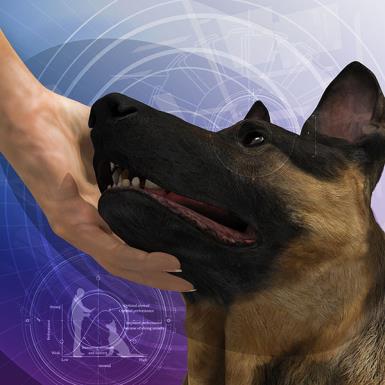An animal's behavior is the product of its genetic composition, the environment in which the animal functions, and the animal's experience. In companion animals, behavior problems weaken the pet–owner bond, resulting in a decreased owner commitment to pet care. They are a primary reason for pet relinquishment and euthanasia.
Behavior

-
Behavioral Medicine Introduction
-
Normal Social Behavior and Behavioral Problems of Domestic Animals
- Social Behavior of Horses
-
- Social Behavior of Cattle
-
- Social Behavior of Swine
-
- Social Behavior of Sheep
-
- Social Behavior of Goats
-
- Social Behavior of Chickens
- Behavioral Problems of Chickens
-
-
-
- Abnormal Repetitive Behaviors
-
- Fear-related Aggression:
- Possessive Aggression (Resource Guarding):
- Play Aggression:
- Redirected Aggression:
- Irritable/Conflict/Impulse Control Aggression:
- Aggression Toward Other Dogs:
- Territorial/Protective Aggression:
- Predatory Aggression:
- Pain-induced and Medical Causes of Aggression:
- Maternal Aggression:
- Treatment of Fears, Phobias, Anxiety, and Aggression
- Hyperactivity
- Destructive Behaviors
- Eating Disorders
-
Elimination Behavioral Problems
- Aging and Cognitive Dysfunction
-
- Social Behavior of Cats
-
-
The Human-Animal Bond
- Overview of the Human-Animal Bond
- Veterinary Family Practice
- Human Health Benefits of Pet Ownership
- Animal-assisted Interventions: Therapy, Activities, and Education
- Service or Assistance Dogs and Other Working Dogs
- Animal Welfare
- Euthanasia, Pet Loss, and Grief for Owners and Veterinarians
- Self-care for Veterinarians
Behavior Sections (A-Z)
Behavioral Medicine Introduction
An animal’s “behavior” is the product of its genetic composition, the environment in which the animal functions, and the animal’s experience (particularly in the pre- and postnatal environment through the primary socialization period). This section focuses primarily on the diagnosis and treatment of abnormal behavior of domestic animals. For each species, normal social behavior is outlined, followed by a description of common behavioral disorders.
Normal Social Behavior and Behavioral Problems of Domestic Animals
Horses are social animals that under feral conditions (or on pasture) live in bands (harems) that consist of several mares, their offspring up to 2–3 yr of age, and at least 1 and as many as 6 adult males. The core of the group is the mares, which stay together even if the stallion leaves or dies. The group size ranges from 2 to 21 horses; multiple-male bands are larger than single-male bands. Groups are not limited to a specific geographic area and will travel in search of resources. Colts and fillies leave the group usually before 2 yr of age (when they become sexually mature), stay alone for a few months, and then join a different group or establish a new one. Some colts may form a “bachelor band” with up to 16 males, and later join other groups in which the stallion has died or been chased away.
The Human-Animal Bond
Companion animals are commonly considered to be family members, and the human-animal bond has become a household term. More than half of all households in the USA have at least one dog or cat, and most pet owners have more than one pet. Cats outnumber dogs as companion animals, and many veterinary practices serve only cats. Yet, a 2008 study of the care pets receive reported that dogs were seen by a veterinarian more than twice as often as cats, even in households with both species.
Also of Interest
Test your knowledge
Which of the following is the most appropriate first step for managing an intact-male cat that is urinating on the carpet?




